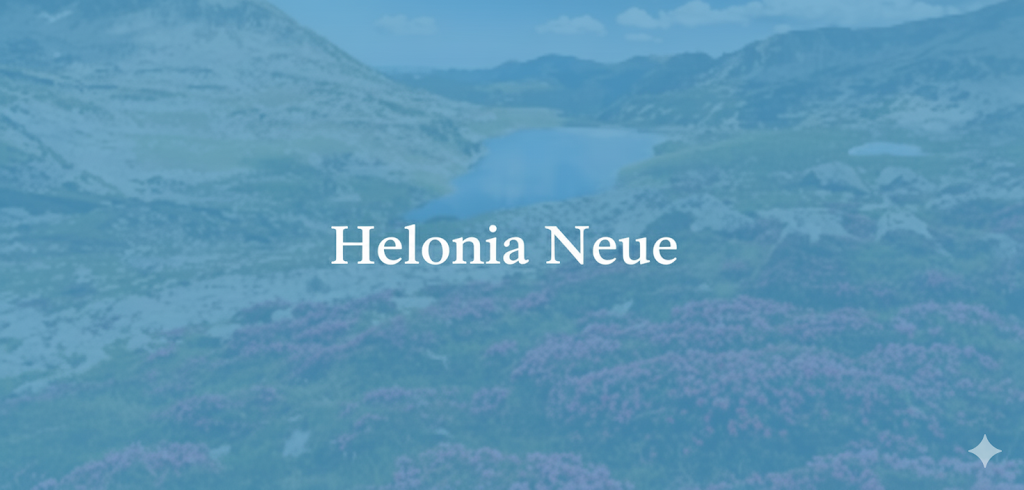Helonia Neue modern serif typeface is made for designers who want the best of both — beauty and functionality. In this article, we’re describing why it’s unique, where it works best, and how it stacks up alongside other serif fonts designers use in today.
Introduction
Type changes rapidly, yet some typefaces manage to be both beautiful and most usable. Helonia Neue is one of those type designs. It’s not loud or flashy. It’s deliberate. Whether you’re in need of ways to personalize your digital displays or want a typeface that doesn’t feel as though it was designed decades ago, Cotangent was created to combine the up-to-date technology we live with today and blend this seamlessly with traditional serifs.
What Makes Helonia Neue Different
Helonia Neue falls somewhere between a traditional print serif and a clean digital face. It has sharp lines, restrained curves, and spacing that ensures easy reading on both paper and screens. The padding of the strokes is consistent, the serifs are sharp but not overbearing, and the proportions feel tuned. When you look at it, every shape seems revised until it works, not showy for the sake of being showy.
While others overdo the special look of their fonts, Helonia Neue insists on functionality. It’s designed for those who want something that looks polished without being too flashy. You can throw it into a logo, across a magazine layout, or in an app interface, and it sits comfortably.
Where Helonia Neue Works Best
You can apply Helonia Neue for brand identities, editorial designs, packaging, and any other use where typography is predominant over decorative elements. It manages to carry off that slicker tone that suits luxury brands, but can also complement cleaner, minimal projects.
Designers often use it in:
- Brand and marks for high-quality products
- Editorial spreads and digital magazines
- Web and UI design with a focus on readability
- Business cards, brochures, and catalogs
The real strength of Helonia Neue is that it never loses its character at various scales. Some of the time we joke around, sometimes tussle, most times unite.” Some fonts fall apart when you shrink them or look funny when you enlarge them. This one coheres on both.
The Design Choices Behind It
If there’s a design philosophy behind Helonia Neue, it is simple: take the neutrality of a neo-serif and inject warmth. The letterforms are uniform but with a bit of humanity. The verticals are slightly heavier and sharpened to lead the eye between longer spans of text. The spacing is pronounced, with the words given enough air to breathe but without losing momentum.
With the capital letters, you get that clean symmetry that designers tend to like. Lower-case lettering is subtle with an even subtler transition, lulling the eye on its way across. It’s not just looking pretty; it’s about rhythm, flow.
Font Pairing and Compatibility
A good font needs partners. Helonia Neue also pairs surprisingly well with sans-serif fonts such as Montserrat, Raleway, and Open Sans. Those pairings help designers create contrast — what with serif headlines and modern sans-serif body text.
For instance, you might want to use Helonia Neue for the main title in your luxury brand’s catalogue, while Montserrat will be used for the smaller details or captions. The two offset each other nicely: one old-school, one new.
Comparison with Competitors
Helonia Neue joins a field full of modern serifs — typefaces like Playfair Display, Libre Baskerville, and Cormorant Garamond. There’s a voice for everyone here, but it’s worth the comparison.
| Font Name | Style Focus | Best Use Case | Readability | Licensing |
| Helonia Neue | Modern serif | Branding, magazines, web | High | Commercial / variable |
| Playfair Display | Classic serif | Editorial headlines | Medium | Free (Google Fonts) |
| Libre Baskerville | Traditional serif | Body text | High | Free (Google Fonts) |
| Cormorant Garamond | Expressive serif | Art & print design | Medium | Free (Google Fonts) |
What makes Helonia Neue different is balance. Playfair Display is a bit ornate for digital work. Libre Baskerville is solid but a bit classic for me. Cormorant Garamond has an artistic feel and is less neutral. Helonia Neue mediates between them — newfangled enough for screens, but still sophisticated enough for print.
Licensing and Availability
Being a commercial font, however, you can assume that, as with the other premium fonts in existence, Helonia Neue will have demo and commercial licenses. Designers experimenting with it for personal work might be able to test out a demo version, but any commercial use needs a proper license.
Licenses usually cover:
- Desktop: print, branding, and packaging use.
- Webfont: for embedding in websites.
- App or eBook: for digital items.
- Commercial extended: for more people (locally, and so.) or multiple clients?
Check the license of the particular vendor at all times. Some restrict or prohibit commercial use, charge for extra traffic, or charge for downloaded apps.
Why Designers Choose Helonia Neue
Successive types did say that they are modern, but fewer actually feel like it has been well-resolved for all possible uses. Designers choose Helonia Neue because it is powerful. It takes on an authoritative air in its uppercase and turns warmer when set all-caps. In those small sizes, it doesn’t get distorted. It is not a novelty typeface — it’s trustworthy.
Some designers also appreciate that it doesn’t have any baggage. Typefaces such as Times New Roman or Garamond evoke a sense of academia and tradition. More importantly, Helonia Neue reads both new and familiar, which means that it can work across industries such as tech, fashion, and editorial media.
Mistakes to Avoid When Using Helonia Neue
Even a great font can look wrong if it’s deployed without consideration. A few things to keep in mind:
- Don’t over-track: When you space the letters too far apart, it will ruin their balanced proportions.
- Watch the line height: this is well sized to fit the font. Too much line space breaks it.
- Test print and digital separately: even thin type carries differently on screen versus paper.
- Pair it wisely: don’t pair it with other heavy serifs. If you want to use a sans-serif for contrast, stay with flimsier ones.
Because getting these details right makes this font work. The design works due to balance — space, size, contrast. When that tension falls apart, the illusion shatters.
User Impressions and Real-World Usage
Designers who have used Helonia Neue talk about it as being able to “blend in quietly.” It isn’t a show font; it is an instrument. Some have applied it to editorial branding, product packaging, and minimalist portfolio sites. It’s because it is so constant that it doesn’t compete with images or color.
It also plays nicely with grid-based layouts — the width and spacing of letters work well and fit cleanly into most design systems, which keeps order when things get visual. That’s one reason digital designers enjoy it.
How It Fits in Today’s Design World
The punctuation in 2025 subtly fancies a minimal, but less sterile world. Brands are seeking fonts that convey clarity and taste. Helonia Neue fits this mood. It brings visual stability to brands without making them look dated.
You’ll see it on luxury skin care branding, on architecture firms’ websites, and editorial blogs. It is just neutral enough to adapt but still strong enough to be memorable.
FAQs
Q: Can you use Helonia Neue for free?
No, it’s typically a commercially available font. You can use a demo version of the software for personal projects, but for all other commercial work, you will need to pay for a license.
Q: Multiple languages supported?
Files must have normal Latin characters. Extended language support is determined by the foundry’s version. Be sure to look at the type specimen before buying.
Q What sets it apart from other serif fonts?
It’s designed for modern readability. Sharper, cleaner drawn, and better balanced for screen and print use than most old-style serifs.
Q: Can I use it for web design?
Yes, but be sure to buy a webfont license. Spacing and proportions allow for relatively easy reading online.
Q: What are good alternatives?
Fonts like Playfair Display or Libre Baskerville can be a kind of interesting free alternative, but the contemporary level of equilibrium is not there.
Conclusion
Helonia Neue isn’t trying to be iconic — it’s trying to do the job. And that’s why it works. It’s a modern serif that has the stability and neutrality of something like Georgia for the web, but is designed specifically for designers with a focus on structure and readability. Whether you’re developing a visual identity or laying out an article for a magazine or designing a homepage, Helonia Neue ensures that the style is absolutely clear and without useless kitsch.

